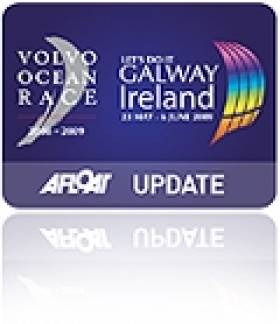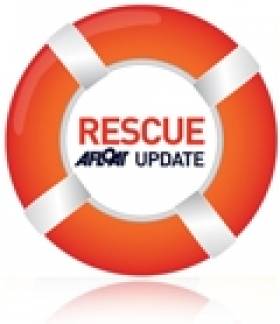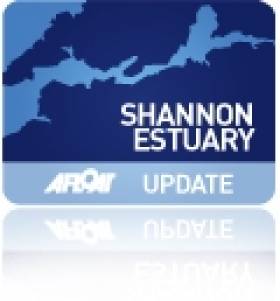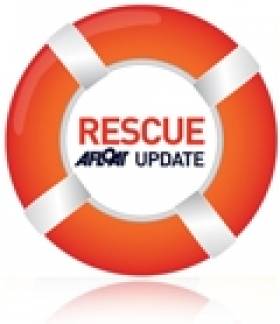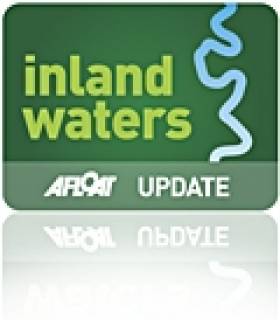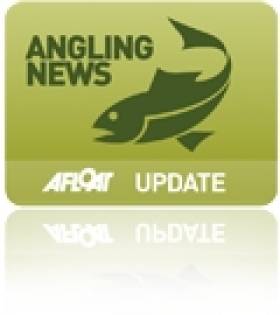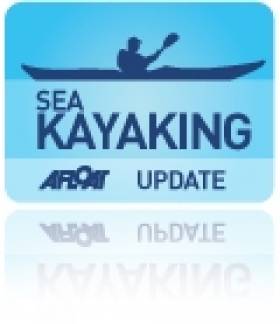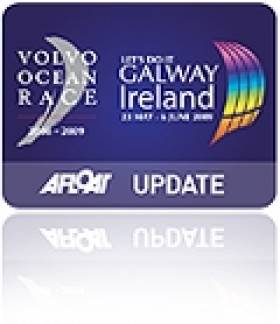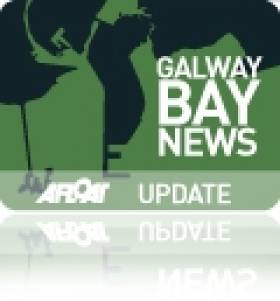Displaying items by tag: Galway
Minister Dashes Hopes of Paying Off Volvo Ocean Race Debts
#VOLVO OCEAN RACE - Minister for Tourism and Sport Leo Varadkar has ruled out any Government bailout to cover the €400,000 in debts owed by organisers of the Volvo Ocean Race finale in Galway, as the Galway City Tribune reports.
Some 60 suppliers have not yet been paid by organisers Let's Do It Global, who are set to meet with stakeholders this coming Monday to discuss the situation.
The race organisers are themselves owed in the region of €170,000 from their own debtors, but even if collected this would cover less than half the value of their own debt.
Hopes that Minister Varadkar might step in to make up the shortfall were dashed on Wednesday when, speaking to Galway Bay FM, he confirmed that the event already received State funds through its sponsorship by Fáilte Ireland, and that as his own department was operating at a deficit no other funding was available.
A spokesperson for his department added that the Fáilte Ireland sponsorship "was the biggest allocation to any tourism event in 2012".
The news all but rules out the potential third bid to host the event, at least for the foreseeable future.
Galway Lifeguard Praised for Canoe Rescue
#RESCUE - A lifeguard at Galway's Leisureland has been praised for his part in the rescue of a canoeist who got into difficulty in the water off Salthill, as The Connacht Sentinel reports.
Ian Brennan raced to the water after a woman looking across from the Galway Bay Hotel spotted the man in trouble a few hundred yards from the shore and raised the alarm.
The Leisureland duty manager, a former competitive swimmer with experience in water safety, said he didn't think twice about the incident.
"I grabbed a ring buoy, ran across the road, stripped down to my boxers and swam to the person," he said.
Brennan managed to swim ashore with the canoeist as Galway's RNLI lifeboat was being dispatched to the scene.
He also commended the lifeboat crew "for the speed at which they launched" and for their quick treatment of the canoeist for hypothermia.
Despite the applause he received from onlookers once back on land, Brennan described his actions as "no big deal".
The Connacht Sentinel has more on the story HERE.
Galway Councillors Put Shannon Flooding Decision On Hold
#SHANNON FLOODING - Galway Bay FM reports that Galway county councillors have postponed making any decision on an Oireachtas report into flooding in areas adjacent to the River Shannon.
The move was taken on the suggestion of Cllr Dermot Connolly in the wake of a joint Dáil and Seanad committee report that highlights eight proposals for dealing with flooding issues along the longest of Ireland's inland waterways.
Cllr Michael Connolly has suggested that Minister for the Environment Phil Hogan and Minister for the Gaeltacht Jimmy Deenihan should meet to discuss the report's findings from both a flooding and environmental stance.
Meanwhile, the Irish Independent reports that the Office of Public Works (OPW) has agreed to carry out tests at Meelick weir on the Shannon in Co Offaly after thousands of acres of farmland were flooded over the summer, ruining silage crops and summer grazing land.
Waterways Ireland has denied allegations that a failure to open sluices and lift boards at the weird contributed to the flooding.
Tribute to Late Galway Sailing Legend Bill King
#OBITUARY - The Sunday Independent paid tribute this past weekend to round-the-world sailor and Galway native Bill King, who died last Friday 21 September aged 102.
William Donald Aelian King was the last surviving commander of a submarine in the Second World War - in charge of the British Navy's T-class Telemachus that sank a Japanese sub in the Strait of Malacca, between Malaysia and Sumatra, in 1944.
Decorated many times for his service by the end of the war, King went on to become a trailblazing solo sailor.
At the age of 58, he was the oldest participant in the Sunday Times Golden Globe Race sailing Galway Blazer II, a junk rigged schooner he designed himself.
After a number of abortive attempts, including an incident with "a large sea creature", he finally completed his solo circumnavigation of the globe in 1973.
Beyond his aquatic escapades, King settled with his wife Anita (who died in 1984, aged 70) at Oranmore Castle outside Galway after the war, where he later developed a pioneering organic farm and garden to help tackle his wife's asthma.
The Sunday Independent has much more on the story HERE.
Fisherman Airlifted to Galway Hospital
#RESCUE - The Irish Examiner reports that a man has been airlifted to hospital after taking ill on a fishing vessel off Galway yesterday Friday 21 September.
The man reportedly experienced chest pains on board the fishing boat off the coast of Spiddal.
Galway RNLI's lifeboat was dispatched to the scene to attend to the man before he was airlifted by Irish Coast Guard rescue helicopter to Galway University Hospital. His condition is as yet unknown.
Minister Proposes Dublin-to-Galway Cycle Path Via Royal Canal
#ROYAL CANAL - The Royal Canal towpath is an "obvious candidate" for a stretch of the new cross-country cycle route from Dublin to Galway proposed by the Minister or Transport.
The Irish Times reports that Minister Leo Varadkar has instructed the National Transport Authority (NTA) to examine possible routes for the project, which would involve development of the present towpath along the waterway from Mullingar to Maynooth.
The NTA is already funding preparatory work with a view to upgrading the canal path as a premium quality Greenway Route for cyclists and pedestrians in the Fingal area from Ashtown to Westmanstown - and will now look at the feasibility of extending this project through Leixlip to Maynooth.
“A national off-road cycle trail would be a first for Ireland and would be a great tourism asset," said the minister, who added that the scheme has "the potential to bring in at least €15 million per annum, much of that going straight into local businesses along the route.”
Irish Fly Fair Returns for Third Year This November
#ANGLING - The Irish Fly Fair and International Angling Show returns to the Galway Bay Hotel in Salthill this November for the third year running.
As the Galway Independent reports, the show will run over the weekend of 10-11 November from 10am to 5pm daily featuring a wide range of exhibitors and trade stands.
Sixty of the world's greatest fly tyers will be on hand to give their advice in the new fly-dressers' workshop.
And angling personalities such as Hywel Morgan, Glenda Powell, Peter O'Reilly, Stevie Munn and Paddy McDonnell will return to give their helpful angling clinics and fly-casting demonstrations.
Meanwhile, younger anglers will have another chance to give the pros a run for their money in the second youth fly tying competition run by APGAI Ireland.
More details on the weekend will be forthcoming on www.irishflyfair.com.
Hop in a Kayak to See Galway By Sea
#SEA KAYAKING - One of the best ways to see the sights of Galway is by sea, as Belfast writer Mark McCormick found out recently.
Writing in the Belfast Telegraph, he describes the "spectacularly beautiful scenery" and "medley of contrasts" he and his wife were treated to on a two-day guided sea kayaking tour of the region surrounding the City of the Tribes.
Being kayaking novices was no barrier to the couple as they paddled in a calm Kinvara Bay at sunset with a guide from Outdoors Ireland, joined by some playful seal pups, before drifting on to the preserved 16th-century Dunguaire Castle - one of the west's most popular tourism spots.
More urban sights were in store the next day as they joined a bigger group for a tour of the city's docks and the Claddagh, including the area's famous swans.
Outdoors Ireland has much more from the Telegraph story HERE.
'Last Ditch Efforts' for Galway Volvo Ocean Race Bid
#VOLVO OCEAN RACE - The organisers of this summer's Volvo Ocean Race stopover in Galway are set to hold meetings with stakeholders in what Galway Bay FM calls a 'last ditch' effort to make a third bid to host the event.
Let's Do It Global will meet in the coming weeks with Galway City Council, Galway Port officials, publicans, hotel owners and the media with a view to drumming up much needed financial support for a bid submission, the deadline for which is the end of this month.
As previously reported on Afloat.ie, Galway City Council has already announced it is not in a position to underwrite the bid, leading Let's Do It Global to describe its application as "unlikely" without a "different mechanism" of funding support like the city or state partnerships in other host ports.
Organisers have also questioned the will at Government level to back up their hosting of the round-the-world yacht race, despite expressions of support and assurances from Galway TDs.
Meanwhile, the organisers of the Volvo Ocean Race are currently recruiting for a brand and marketing managers to join their commercial team in Alicante as plans build up steam for the next edition of the race in 2014/2015.
Full details of the postion are available on the Volvo Ocean Race website HERE.
Galway Beach Gets Clean Bill of Health for Ironman Triathlon
#GALWAY BAY - Galway City Council lifted the swimming ban on Salthill at the weekend, clearing the way for the upcoming Ironman 70.3 triathlon in the City of the Tribes.
As previously reported on Afloat.ie, concerns had been raised about the Galway beach closure last week resulting from elevated levels of E.coli above the EU's mandatory safety theshold.
But subsequent testing showed that levels had returned to below the safe limit, and Galway Bay FM reports that a second test confirmed that E.coli presence was "well below" permitted values.
Despite the bathing ban on Grattan Beach, triathlon organisers were confident that the event would "not be impacted".
According to the Galway Advertiser, some 2,500 particpants are registered to compete in the Ironman 70.3 triathlon this Sunday 2 September.
The second annual race comprises a 1.9km swim along the Salthill Promenade, a 90km cycle through Connemara and a 21.1km run through the streets of Salthill and The Claddagh.
As many as 25,000 visitors are expected in what marks another tourism boost for Galway, following on the heels of the Volvo Ocean Race finale last month.


























